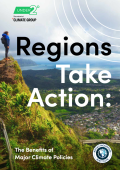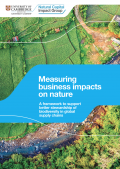
This handbook shows how regional governments are reaping the immediate benefits of decisive climate action while also safeguarding the future. For these governments, a collection of key actions is driving significant impacts on the economy, equity, public health, air quality, and resilience. The handbook details five transformative actions regional governments can take to limit the effects of climate change while supporting a broad range of other societal benefits.

This report synthesises multiyear, multidisciplinary climate change studies on the Sundarbans—the world’s largest remaining contiguous mangrove forest and wetland of international importance, as well as home to some of South Asia’s poorest and most vulnerable communities. The studies’ findings indicate that, in a changing climate, sea-level rise, storm-surge intensification, and water salinization will alter the Sundarbans ecosystem significantly.
This 2020 State of Transition Report from the Transition Pathway Initiative (TPI) is the latest in a series of annual stocktakes of the progress being made by the world’s biggest and most emissions-intensive public companies on the transition to a low-carbon economy.

This report discusses the Biodiversity Impact Metric, a practical risk-screening tool for supply chain businesses that source agricultural commodities.

The scale of the COVID-19 crisis and the associated size of the response mean that decisions governments make now will influence systems, create assets, and define development directions well into the future. ADB developed this technical note to help its developing member countries in moving forward, with the assessment framework intended to serve as a tool that decision-makers can use to select and prioritise a package of recovery interventions that will collectively achieve recovery, climate, and resilience objectives.
